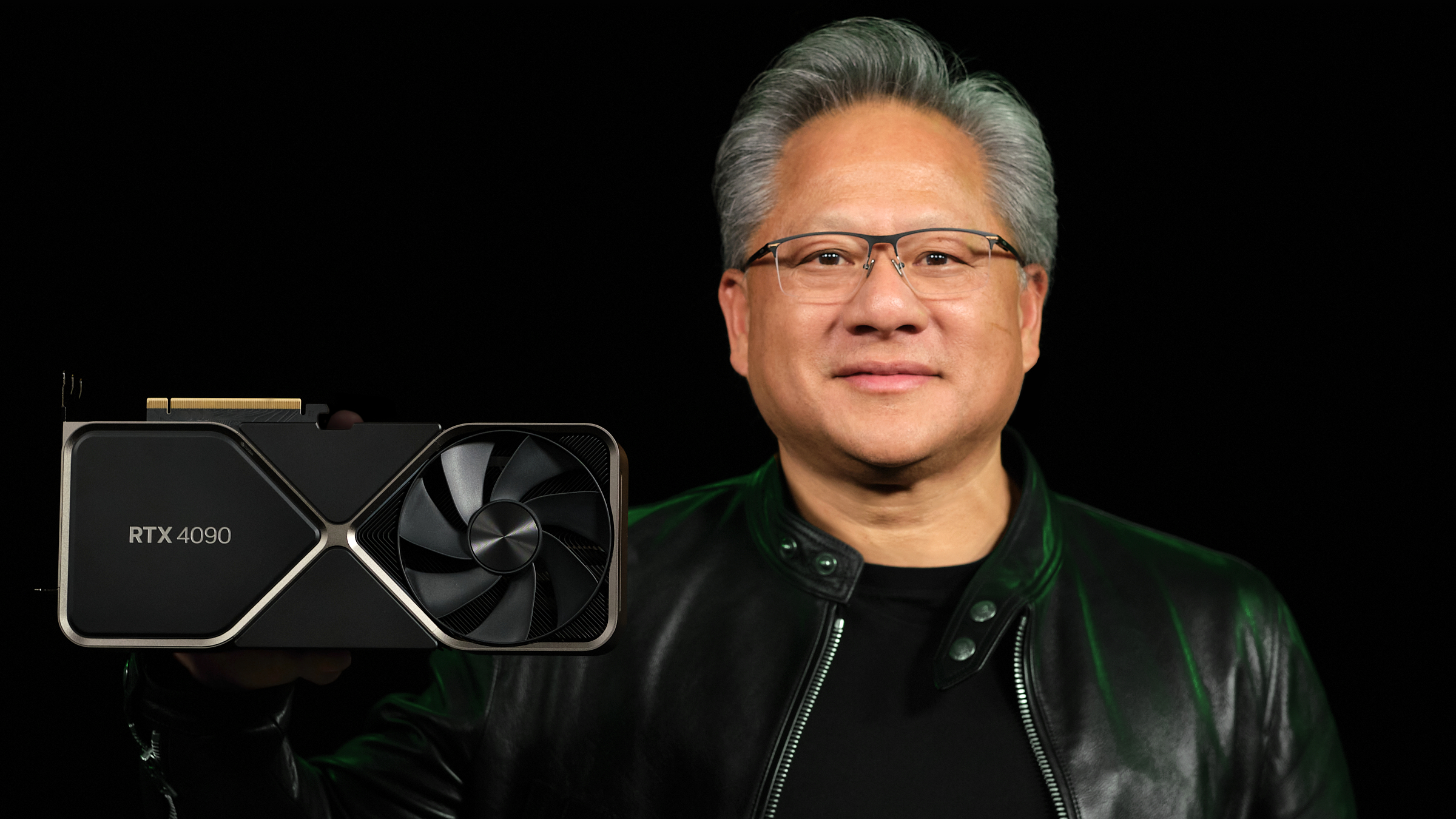Nvidia CEO justifies GeForce RTX 40-series price hike with Moore’s Law
Nvidia’s CEO justified GeForce RTX 40-series GPU price hike with a popular computing principle

The Nvidia GeForce RTX 4080 and 4090 are coming soon, but they won’t be cheap. Even as prices bottom out on the excellent Nvidia GeForce RTX 30-series of GPUs, the company has announced significant price hikes for the RTX 4080 and RTX 4090 — $1,600 for the latter, and between $900 and $1,200 for the former, compared to $1,300 for the RTX 3090, and $700 for the RTX 3080. But Nvidia’s CEO insists you shouldn’t blame the company; instead, you should blame Moore’s Law.
“Moore’s Law is dead,” declared Nvidia CEO Jensen Huang in a press discussion with Digital Trends and PC World. “A 12-inch wafer is a lot more expensive today. The idea that the chip is going to go down in price is a story of the past.”
Huang’s statement is technically true. At the same time, it doesn’t tell the whole story.

To fully grok where Huang is coming from, you have to know a little bit about computing history. When electronic computers first proliferated, they were gigantic devices, often taking up entire laboratories while offering only a few megabytes of processing power. In 1965 Gordon Moore, Intel’s cofounder, observed that the transistor count in a microchip roughly doubles every two years. From a functional perspective, this has made computers smaller, cheaper and more accessible over time.
Moore’s Law continued to be an accurate observation of processing power up through about 2010. The problem is that there is a functional limit to how small transistors and microchips can become, which Moore himself acknowledged. At present, Moore’s Law is petering out, and may cease to function altogether by 2025.
At the same time, it’s both brash and brazen to draw a direct connection between Moore’s Law and GPU pricing. While Moore’s Law indirectly affects computer pricing, it’s neither an immutable law of nature, nor a theory of economics. Huang is probably correct that GPUs cost more now to make, due to supply chain issues, semiconductor shortages and worldwide inflation. But at the same time, Nvidia was able to provide the 30-series GPUs at much more reasonable prices, and the company didn’t exactly go bankrupt.
In short, every savvy tech consumer should know the basics of Moore’s Law — and every savvy tech consumer should be at least a little skeptical of huge corporations using it to justify price hikes. Then again, Nvidia is hardly the only company jacking up consumer tech prices.
Sign up to get the BEST of Tom's Guide direct to your inbox.
Get instant access to breaking news, the hottest reviews, great deals and helpful tips.
Marshall Honorof is a senior editor for Tom's Guide, overseeing the site's coverage of gaming hardware and software. He comes from a science writing background, having studied paleomammalogy, biological anthropology, and the history of science and technology. After hours, you can find him practicing taekwondo or doing deep dives on classic sci-fi.

